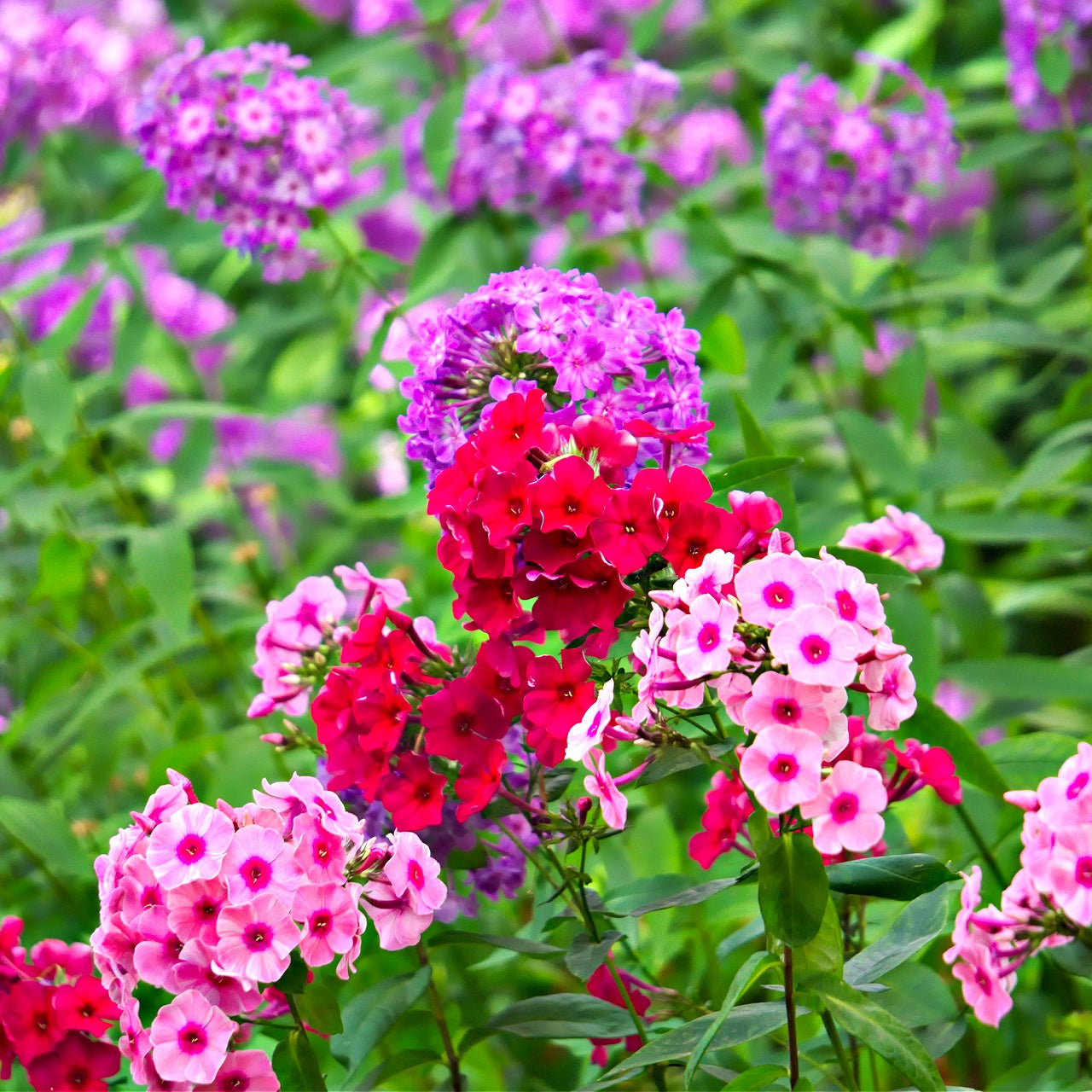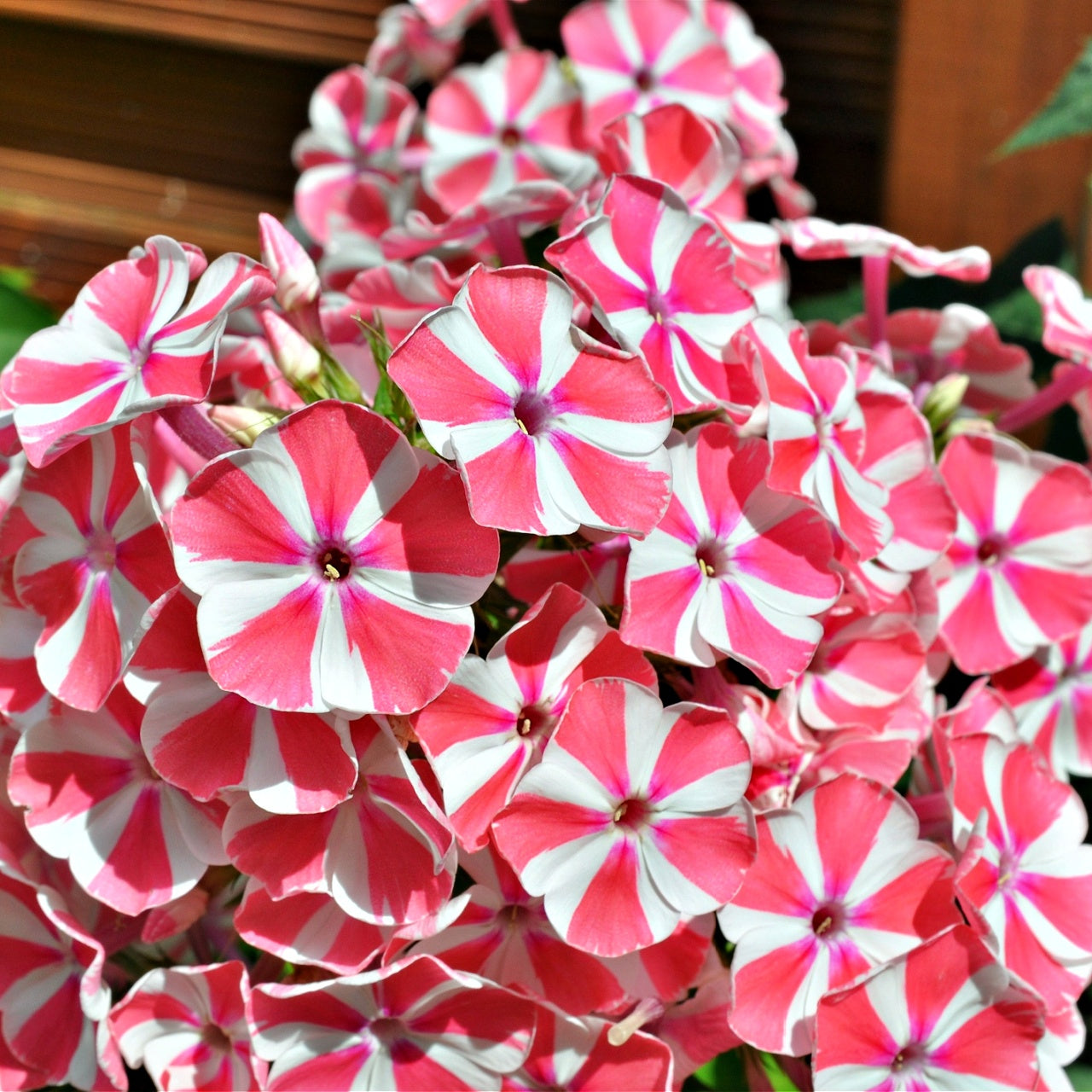Annual Phlox Plants
Annual Phlox Plants
This plant ships:
Ships Now (5-7 Days)Couldn't load pickup availability
Exposure
Full SunHeight at Maturity
Under 12 InchesUsage
Flower GardensShipped As
Bare-rootShips
Ships Now (5-7 Days)Planting Zones
3-9Annual Phlox Plants
Annual Phlox plants and its Pink, white, blue, and purple varieties can also be bi or multicolored once they bloom in the mid-late summer. With a pleasant scent, long blooming period, different sizes between two and four feet(few grow taller or shorter)with a medium growth rate, and ease of care, these low-maintenance flowers have mass appeal in the U.S.
The Annual Phlox Plants Spreads Quickly
Some types need to be planted based on the number of flowers desired, and others will spread as they grow. They need at least six hours of direct sunlight daily, but partial shade is recommended in hot climates. If compost or aged manure is added to their soil, it will help with water retention as they are heavy feeders, and adding some compost will allow significant conservation.
PLEASE NOTE- THAT COLORS WILL RANGE FROM BLUE TO PURPLE AND SOMETIMES PINK. IT IS THE WAY WILD PHLOX GROWS, AND THE COLOR DEPENDS ON THE NUTRIENTS IN THE SOIL
This plant looks Beautiful as a Border or Ground Cover. It can be Neat and trimmed or have a more Natural View as it hangs over the Sides of Pots or Garden Edges.
It Is Beautiful In A Bouquet
Other varieties look cute as part of a bouquet or surrounding the centerpiece in your garden. They are an elegant way to add curb appeal and atmosphere to a home or garden, attracting butterflies and hummingbirds. Some bumblebees may dance around and make a hive nearby. Some tiny spiders may nest among them, acting as natural pest control, keeping insects and spiders out of one's home.
It makes an elegant addition to any home or garden, staying in full bloom from spring nearly into the fall months before the first winter frosts.
PLEASE NOTE- COLORS WILL RANGE FROM BLUE TO PURPLE AND SOMETIMES PINK. It IS THE WAY IT GROWS, AND THE COLOR DEPENDS ON THE NUTRIENTS IN THE SOIL
It offers an array of colors during the summer months. This flower can bloom for six weeks or longer. Some start to bloom in mid-summer, while others do not begin until late in August. Colors include white, red, purple, lavender, rose, and pink. Some are a blend of two colors with a center of another color.
The flowers have five lobes and grow in clumps at the top of the plant. The flowers generally get from 2 to 4 feet tall, growing upright on a stiff stem. The leaves are deep green and lance-shaped. When the stems on the flower are approximately six inches tall, pinch off all but five or six and the tips of these stems. It will allow the flower to grow more prominent clusters of blooms.
It is a Summer Garden Mainstay with Beautiful Blooms from July through September
More shade will prevent the flower from producing as many blooms, and the quality of the flowers will improve. They should not be grown under trees or near large hedges. Competition for nutrients and moisture from the soil can cause a problem for them.
These perennials will do well when planted in good drainage areas and regularly watered. It is best to moisten the soil around the flower rather than the flower itself, as this helps prevent disease. Fertilizer is recommended in the spring as new growth appears.
Mulch Around The Base Of The Plant
Mulch will help keep the soil around the flower fresh and help to retain moisture. They will grow from the District of Columbia to the panhandle of Florida. When the blooms start to fade, removing the flowers will help keep the blooms you initially chose the color. It is sometimes possible to get the flower to bloom twice by fertilizing again after the first blooms are gone.
These gorgeous flowers are adored by hummingbirds and butterflies alike, so if you want to attract them to your yard, add them to your landscaping. The bulb comes in various colors: deep red, bubblegum pink, hot raspberry pink, peach orange, royal purple, light lavender, and bright pure white.
They can tolerate clay, loamy, or sandy soil, but make sure it drains well. The foliage can range from bright green to dark green and grows in the pattern of an X up the flower's stem, making it distinctive from other flowers in your garden and adding interest and variety.
There is also some with variegated foliage for the genuinely adventurous gardener. The flower heads form a cluster at the top of the stem, with dozens of five-petaled flowers. If desired, they can be cut for flower arrangements indoors.
The flower's fragrance ranges from sweet to spicy, depending upon the variety you choose. You can also deadhead the flowers to encourage more blooms from the flower. They will seed if you allow bees, butterflies, or hummingbirds to pollinate the flower blooms.
Seeds that drop from the original flower enable the flower to spread to surrounding areas, ranging from 18 to 24 inches. With so many colors and a variety of them available, it is no wonder it is a favorite addition to gardeners everywhere. Be sure to add some to your landscaping today.
The bees, butterflies, and hummingbirds of your area will thank you!
The flower is a common perennial flowering type that blossoms well during the summer. Its beauty during the summer will leave you admiring the flowering process. The flower portrays a cluster of pink, lavender, and white flowers. The flower grows to an average height of 3 to 4 feet tall with bright-colored petals. It thrives well in native North American areas with hardiness zones of 4 to 8.
Growing it at home should be done during the early days of the spring season, and a location with enough sunlight and good water drainage should be chosen. The soils should be moist and highly fertile for a successful germination rate. You should apply fertilizer or compost manure during planting and continue top dressing until the flower is about to bloom.
It will maximize the flower's growth rate because of suitable environmental conditions. Consider watering the flower weekly until it stabilizes and ensure the soil remains moist for maximum production.
How To Make Your Plants Bushy
Another essential factor to consider when growing Annual Phlox is pruning the flower. Pruning is vital if you want a bushy flower with more flowering options. This means the flower won't grow tall but broad, with many branches, increasing the number of flowers.
Share






